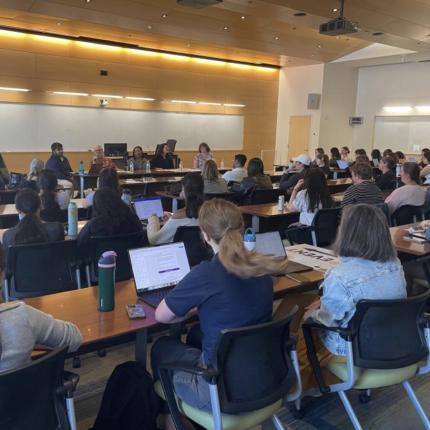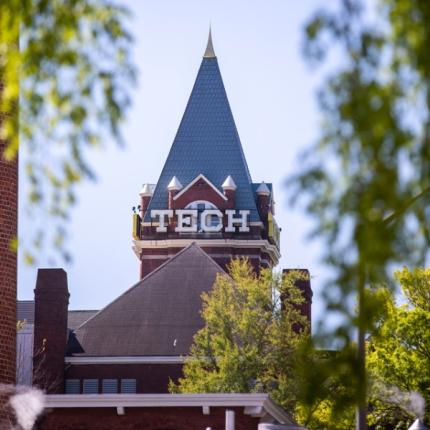“I knew nothing of my father’s side when I started ancestry, nothing,” said Kenyetta Harris, a payroll administrator in Savannah. “To now be able to track it back to Africa — words can’t even describe it.”
Harris partnered with Christopher Lawton, a lecturer in Georgia Tech’s School of History and Sociology, to learn about the generations of her family who were enslaved at the Cobb-Lamar plantations in Baldwin and Sumter counties.
While she had gathered information about her paternal grandfather’s ancestors from years of research on that side of her family, Lawton's class helped her discover people, stories, and a history she had never known on her paternal grandmother's side.
Piecing Together the Family Tree
Lawton is the author of Seen/Unseen: Hidden Lives in a Community of Enslaved Georgians, and has spent years unearthing data on enslaved people in Georgia with co-authors Laura Nelson and Randy Reid.
Lawton brought students into the project when he taught at the University of Georgia, and has now included more than 125 Georgia Tech students in the research since he began teaching here last fall. Usually, he randomly assigns names for his students to research, “but thanks to a gift from the universe, I’ve gotten to know Kenyetta and hear about her family story,” Lawton said.
He and the students in HTS3024 reconstructed her family line beginning with a man named Cyrus Fuller, who was born in Africa in the 1790s. They continued up to the present through Harris and her extended family.
“It’s one thing to hear Martin Luther King’s story, or Booker T. Washington’s or Rosa Parks’,” said an emotional Harris on a Zoom call with the students. “It’s totally different when it’s your own story.”
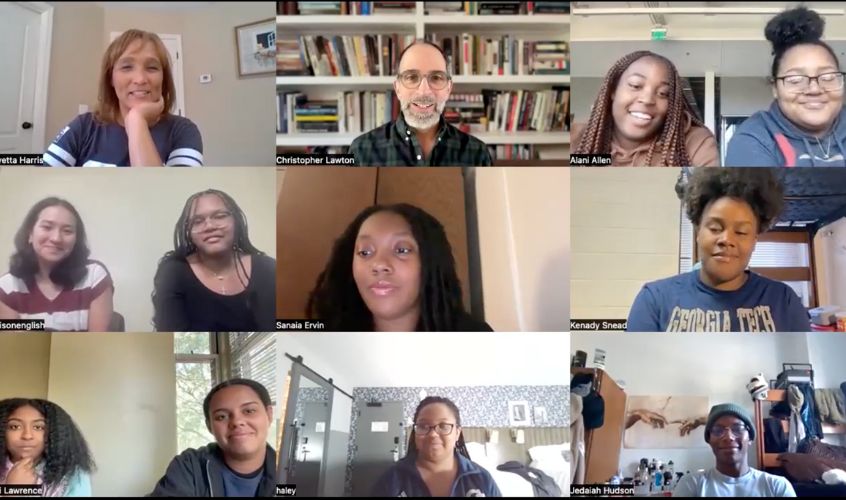
Students in Lawton's (top/center) class presented nine biographies to Harris (top/left) on a Zoom call in October. Click each name in the text below to hear the presentation.
100 Years of History
Lawton’s class presented nine biographies to Harris during the Zoom call. Once finalized, they will be added to the collection of more than 70 already written by GT undergraduates and published on the Seen/Unseen website.
The students discovered that was born in West Africa, kidnapped and enslaved as a teenager, and sold in Charleston, South Carolina, in 1806 from the slave ship Robert. Cyrus married and had sons Anderson, and
Levi married and Emmanuel married Emmanuel and Ailsy had a daughter named who is Harris’ great-great-grandmother. Candace was able to grow up with her aunts, uncles, cousins, and grandfather Cyrus after emancipation in 1863. Eventually, Candace married Calvin Lavier and settled in Florida.
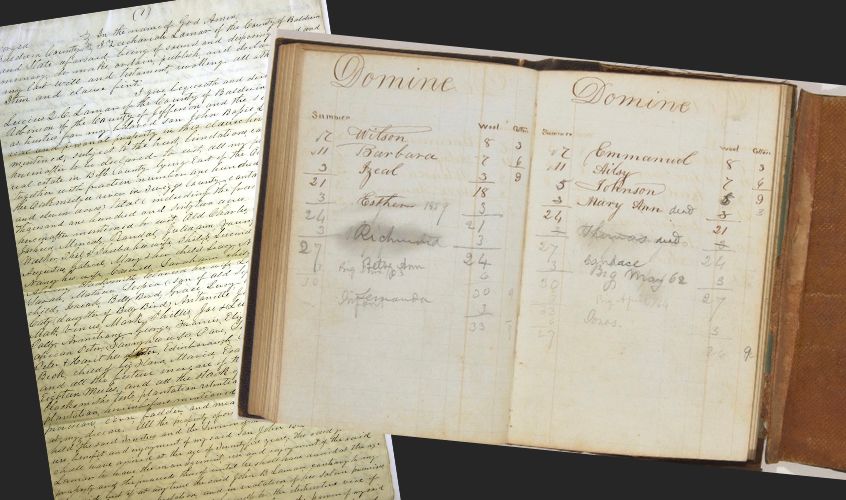
Left: An image of Zachariah Lamar's last will and testament from 1832. It bequeathed Cyrus, Sukey, Emmanuel, and Anderson to Lamar's daughter Mary Ann and Ghent and Henry to Lamar's son, Andrew. The will is transcribed on the Seen/Unseen website. Right: A privately held plantation book from 1859 lists Emmanuel, Ailsy, and their children Johnson and Mary Ann as property of the Domine plantation. (Image courtesy of the T.R.R. Cobb House Museum.)
How They Did It
The information sounds straightforward but is often difficult to find because enslaved people do not appear by name in the U.S. Census records prior to 1870. Along with genealogy and historical websites, the students also used bills of sale, wills, and plantation books from the primary sources archive from the Seen/Unseen book project to reconstruct the Fuller family members’ lives up to that point.
Sanaia Ervin, a first-year biology student in the class, called the work “frustrating and nerve-wracking” because the information was so scant at times.
But Harris told the class that what may seem like small pieces of information to them are huge to her.
“It’s literally centuries of lost family members that we just don’t know. And with the work of you all, it brings closure — a lot of closure — and happiness,” she said.
It also adds up to a more accurate version of our history, Lawton said.
“It’s difficult because you want to tell whole lives, and, sadly, all we can tell are little bits. But as more and more of that gets retold, it changes by degrees the story of the American past that we tell. It makes it more honest, complicated, and painful. And, really, a story about struggle and survival.”
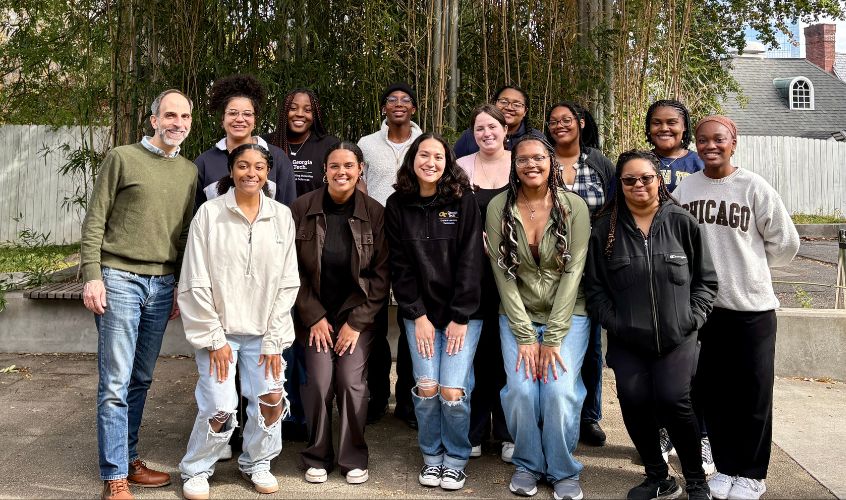
Students in Lawton's Fall 2024 HTS3024 class. Front row from left to right: Mariah Rogers, Kaeli Lawrence, An An Marone, Madison English, Haley Evans, and Zemirah Sconiers. Back row from left to right: Christopher Lawton, Denver Rice, Alani Allen, Jedaiah Hudson, Layla Adamson, Andrea Lewis, Sanaia Ervin, and Kenady Snead.
‘We All Come From Somewhere’
Alani Allen, a third-year environmental engineering major, said the project inspired her to delve into her own family history.
“I just kind of assumed that no one in my family knew anything, but that’s nowhere near true,” she said.
In conversations with her mom, Allen discovered that until her grandfather was a teenager, he worked on the same Alabama plantation where her family had been enslaved.
“I kind of got chills,” she said.
Harris shared a similar story about the power of discovery and personal history. She is from Massachusetts but later relocated to Savannah.
“To find out that my ancestor who came from Africa stopped in the same city, I’m like, wow. Wow,” Harris said. “I know exactly where Cyrus got off the ship and where they kept him. To re-walk his tracks when he arrived here, it was so surreal.”
Andrea Lewis, a second-year civil engineering student, said she enjoyed the project and hopes the small amount of information they were able to provide Harris can make a difference.
“Truly saying their names, knowing a little bit of who they are, makes the biggest impact,” she said. “Because truth be told, we all come from something, we all come from somewhere, and our stories are very important.”
Biography Credits
- Cyrus Fuller and Sukey Fuller: Layla Adamson, Madison English, An An Marone, Denver Rice
- Henry Fuller and Ghent Fuller: Sanaia Ervin, Haley Evans, Kenady Snead
- Levi Fuller and Chana Fuller: Alani Allen, Jedaiah Hudson, Andrea Lewis, Zemirah Sconiers
- Emanuel Fuller and Ailsy Fuller: Kaeli Lawrence, Mariah Rogers
- Candace Fuller Lavier: Sanaia Ervin, Haley Evans, Kenady Snead



